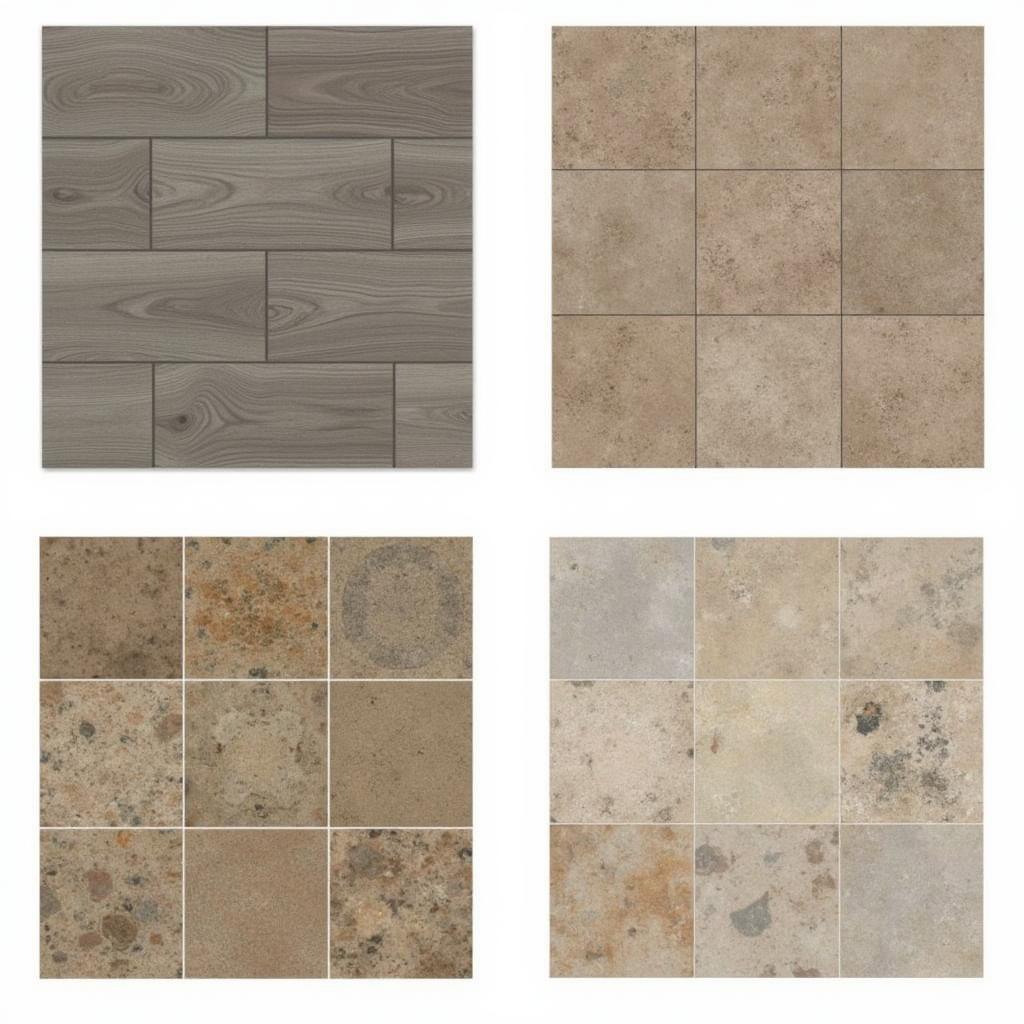Backyard Floor Tiles: The Ultimate Guide to Choosing & Installing
October 20, 2024Backyard Floor Tiles are an excellent way to transform your outdoor space into a beautiful and functional oasis. Whether you’re looking to create a relaxing patio area, a stylish pool deck, or a designated space for outdoor dining, choosing the right backyard floor tiles can make all the difference. This comprehensive guide will walk you through the essential factors to consider when selecting and installing backyard floor tiles, ensuring a stunning and durable result for your outdoor haven.
Factors to Consider When Choosing Backyard Floor Tiles
Choosing the right backyard floor tiles involves considering several crucial factors to ensure your selection complements your style, withstands the elements, and provides long-lasting durability.
Material Matters
The material of your backyard floor tiles plays a significant role in their appearance, durability, and maintenance requirements.
- Porcelain Tiles: Highly durable, resistant to scratches, stains, and fading, porcelain tiles are an excellent choice for high-traffic outdoor areas. They offer a wide range of styles, colors, and finishes to complement any design aesthetic.
- Ceramic Tiles: While not as durable as porcelain, ceramic tiles offer affordability and a variety of design options. They are suitable for areas with less foot traffic and require proper sealing to enhance their moisture resistance.
- Natural Stone Tiles: Limestone, slate, and travertine are popular natural stone options for backyard flooring. They offer a timeless elegance and natural beauty, but require regular sealing and maintenance to prevent staining and damage.
 Different Materials for Outdoor Floor Tiles
Different Materials for Outdoor Floor Tiles
Slip Resistance is Crucial
Safety is paramount, especially in outdoor areas prone to moisture. Choosing slip-resistant backyard floor tiles is crucial to prevent accidents. Look for tiles with a textured surface or a high COF (Coefficient of Friction) rating, which indicates their slip resistance.
Weather Resistance
Backyard floor tiles are exposed to the elements year-round, making weather resistance a vital consideration. Opt for tiles that are frost-resistant, fade-resistant, and can withstand extreme temperature fluctuations without cracking or warping.
Style and Aesthetics
Backyard floor tiles are available in a myriad of styles, colors, sizes, and patterns to complement any outdoor design theme.
- Colors: Lighter colors can make your backyard appear more spacious and reflect heat, while darker colors add a touch of drama and can conceal dirt more effectively.
- Patterns: Geometric patterns, intricate mosaics, or natural stone textures can add visual interest and create a focal point in your backyard.
- Sizes: Large-format tiles create a seamless look and require fewer grout lines, while smaller tiles offer design versatility and can be used to create intricate patterns.
Maintenance Requirements
Consider the maintenance requirements of different tile materials before making your final decision. Porcelain and ceramic tiles are generally low-maintenance, requiring only regular sweeping and occasional mopping. Natural stone tiles, however, require regular sealing and may need professional cleaning to maintain their beauty.
Installing Backyard Floor Tiles: A Step-by-Step Guide
Proper installation is essential for ensuring the longevity and durability of your backyard floor tiles. Follow these steps for a successful installation:
1. Prepare the Subfloor: Ensure your subfloor is level, stable, and properly prepared.
2. Plan the Layout: Determine the layout of your tiles, considering the size and shape of your backyard.
3. Apply Mortar: Use a suitable mortar to adhere the tiles to the subfloor, ensuring even coverage.
4. Place the Tiles: Carefully place the tiles onto the mortar bed, using spacers to maintain consistent grout lines.
5. Grout the Joints: Once the mortar has cured, apply grout to the joints between the tiles, filling the gaps completely.
6. Clean Up Excess Grout: Remove excess grout promptly to prevent staining and ensure a clean finish.
 Installing Backyard Floor Tiles
Installing Backyard Floor Tiles
Backyard Floor Tiles: Frequently Asked Questions
Q: Can I install backyard floor tiles myself?
A: While it’s possible to undertake a DIY tile installation, it’s recommended to hire a professional, especially for larger or more complex projects.
Q: How do I clean and maintain my backyard floor tiles?
A: Regular sweeping and occasional mopping with a mild detergent solution are usually sufficient for porcelain and ceramic tiles. Natural stone tiles may require specialized cleaners and sealers.
Q: What is the most durable type of backyard floor tile?
A: Porcelain tiles are renowned for their exceptional durability, scratch resistance, and low water absorption rates.
Explore More Backyard Design Ideas
Looking for more inspiration to create your dream backyard? Check out these articles:
- Outdoor Kitchen Ideas: Design a functional and stylish outdoor cooking space.
- Fire Pit Ideas: Create a cozy gathering spot with a stunning fire pit.
- Landscape Lighting Ideas: Illuminate your backyard and enhance its ambiance.
For any assistance with choosing or installing the perfect backyard floor tiles for your outdoor space, contact us at Phone Number: 0915117113, Email: [email protected] or visit our address: To 3 Kp Binh An, Phu Thuong, Viet Nam, Binh Phuoc 830000, Vietnam. Our dedicated customer support team is available 24/7 to answer all your queries.